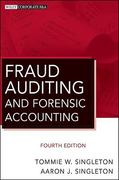Question
complete the journal entries below May On May 1st you pay all dividends owed to your owners. June Leased additional warehouse space from Leasing Solutions
complete the journal entries below
May
-
On May 1st you pay all dividends owed to your owners.
June
-
Leased additional warehouse space from Leasing Solutions for two years on June 1st due to expiration of the previous rental contract. $153,000 cash was paid for the new contract on this date which covers the rental fee for two years. There is no value left in the previous contract. [Adjusting Entry Required]
-
Wage expenses from January 1 June 30 $496,000. Pay this in full including your beginning balance in wages payable.
-
On June 19th, $136,000 of prepaid insurance was used.
-
On June 26th a customer that previously bought your product on account has filed for bankruptcy. He owed you $43,500. You expect to collect $0.
July
-
Your company issued 1,000, 3.1% bonds (face value of each bond is $1,000) at 96.3975 on July 1st, 2019. The bonds are due on July 1, 2024, with interest payable each January 1 and July 1. The market rate at the time of the bond issuance was 3.9 Percent. Use the effective-interest method to calculate both the interest expense and the amortization of the bond discount when each interest payment is made.
[Adjusting Entry Required]
August
-
Purchased a Patent (Intangible Asset) for $84,000 on August 1st. The patent will be amortized over a 10 year period on a straight-line basis.
[Adjusting Entry Required]
-
On August 6th, a piece of land that was originally purchased for $1,200,000 was sold for $1,350,000 cash.
-
August 15th, your customers bought 9,000 units of your product at $146 per unit. The cost of this product is determined by the method of inventory valuation used by your company. Customers paid you 60% in cash and the remainder was on account.
-
Received on August 25th a $197,000 cash payment from a customer paying on their account.
September
-
$47000 cash was paid for an investment in Company X's marketable securities on September 3rd.
-
On September 12th, a piece of equipment was sold for $380,000 cash. The equipment was originally purchased for $520,000. At the time of the sale, it had been depreciated by $90,000.
-
Purchased and used $9,500 worth of fuel for the delivery truck on September 18th.
October
-
Your top sales officer met with a new customer to discuss a potential future contract. She informs you that the customer is considering signing the $289,000 deal, which would become effective February 2020.
-
On October 1st, you purchased 11,250 units at the increased price of $81 per unit. The purchase was made on account.
-
On October 10th you paid your supplier $238,000 cash for inventory purchased on account.
November
-
November 1st, the CEO, in an effort to adjust ratios, ordered the repurchasing of the companys own stock. The quantity of stock repurchased was 160,000 shares.
-
Purchased a two-year building insurance policy on November 1st for $354,000 cash.
[Adjusting Entry Required]
-
On November 17th a customer pays you $478,000 for work that you will finish in January of 2020.
-
November 19th, your customers bought 8,650 units of your product at $155 per unit. The cost of this product is determined by the method of inventory valuation used by your company. Customers paid you 45% in cash and the remainder was on account.
-
An employment contract is signed with a new regional manager. You have offered him $160,000 per year. He will not begin working for the company until March 2020.
Step by Step Solution
There are 3 Steps involved in it
Step: 1

Get Instant Access to Expert-Tailored Solutions
See step-by-step solutions with expert insights and AI powered tools for academic success
Step: 2

Step: 3

Ace Your Homework with AI
Get the answers you need in no time with our AI-driven, step-by-step assistance
Get Started


